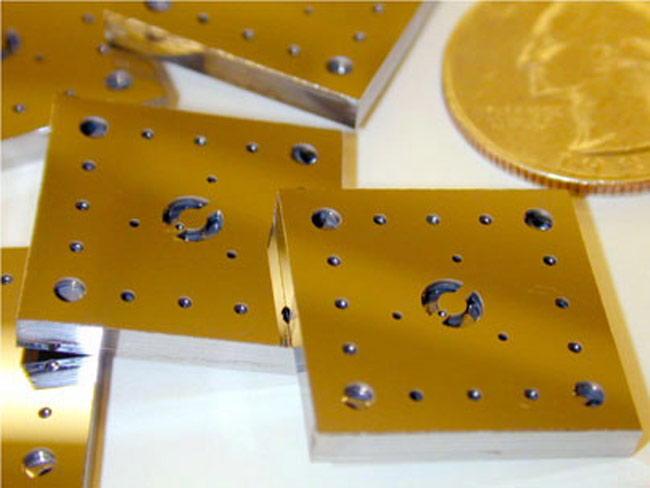Tiny Silicon Engine is Newfangled Battery

A new battery that uses a tiny gas turbine engine could make charging that mp3 player every day a thing of the past, that is once scientists figure out how to make it all work.
The teensy turbine, placed in a silicon chip roughly the size of a quarter, could help lighten the load of people who have no access to power and typically have to carry heavy batteries. Such inventions could be useful for expeditions and military operations.
Fuel-burning engines need many components such as a compressor and a combustion chamber. Developing these tiny parts is difficult and costly. To remedy this problem, the researchers used silicon wafers, thin slices of material that can conduct electricity. Each wafer was etched to leave incised surfaces.
The researchers stacked six wafers like a heap of pancakes. The spaces and surfaces between these pieces of crystal created the functions and features needed for the engine [image].
So far, it all seems to run. Inside the tiny combustion chamber, fuel and air quickly mix and burn at the melting point of steel. Turbine blades, made of high-strength microfabricated materials, spin at 20,000 revolutions per second, 100 times faster than those in jet engines. A mini-generator produces 10 watts of power and a small compressor raises the pressure of air in preparation for combustion.
"So all the parts work.... We're now trying to get them all to work on the same day on the same lab bench," said Alan Epstein, a professor at the Department of Aeronautics and Astronautics at the Massachusetts Institute of Technology. Ultimately, of course, hot gases from the combustion chamber need to turn the turbine blades, which must then power the generator, and so on. "That turns out to be a hard thing to do."
Epstein and colleagues hope to find a way to turn the turbine blades by the end of the year.
Get the world’s most fascinating discoveries delivered straight to your inbox.

